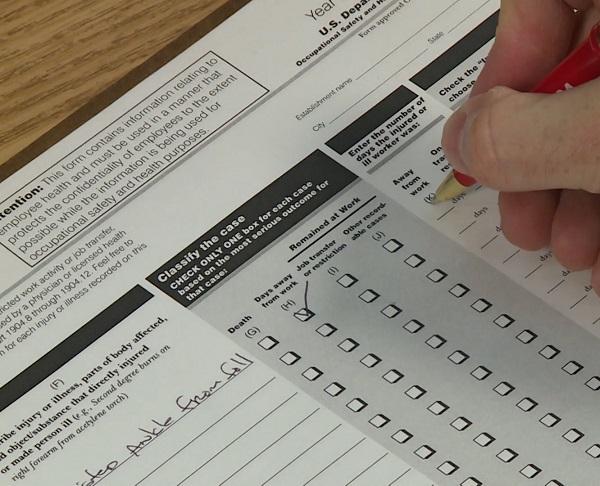With OSHA records, three main terms are commonly used, and they’ll be used throughout this article. You’ll learn more about each later on, but here are the basics:
Recording is simply the act of tracking an on-the-job injury or illness. Multiple forms and logs need to be filled out and maintained by each organization, with different details required of each one.
Reporting means notifying OSHA of certain outcomes from occupational incidents, such as a death. These types of incidents must be reported within a certain time frame, depending on the occurrence.
Submitting is similar to recording, in that the requirement doesn’t apply to all employers. However, for those who fall within the restrictions, a specific injury and illness form needs to be electronically submitted to OSHA each year.
When it comes to workplace safety, it’s crucial for employers to understand the difference between OSHA’s recordable and reportable incidents:
- Recordable incidents: OSHA defines a recordable incident as any on-the-job injury or illness that meets certain criteria, such as resulting in days away from work, restricted work, or transfer to another job. These types of incidents must be recorded in a log or on a form and maintained by the employer for five years. The rationale behind this requirement is to allow OSHA to track the frequency and severity of injuries and illnesses in the workplace, and to identify areas where improvement is needed. Employers can ensure compliance with this requirement by properly training employees on how to report injuries and illnesses, and by regularly reviewing and updating their injury and illness logs.
- Reportable incidents: OSHA defines reportable incidents as specific types of accidents, such as a fatality or the hospitalization of three or more employees. These incidents must be reported to OSHA within a certain timeframe, usually within eight hours. The rationale behind this requirement is to allow OSHA to quickly respond to serious accidents and to investigate the causes of these incidents. Employers can ensure compliance with this requirement by having a clear protocol in place for reporting incidents to OSHA and by training employees on the importance of timely reporting.
- Submitting: Submitting refers to the requirement for certain employers to electronically submit their injury and illness records to OSHA each year. This is done through the Injury Tracking Application (ITA) and is intended to improve workplace safety by allowing OSHA to identify and address hazards more effectively. The rationale behind this requirement is to allow OSHA to have more accurate and up-to-date data on injuries and illnesses in the workplace. Employers can ensure compliance with this requirement by regularly reviewing and updating their injury and illness records and by submitting their data through the ITA on a timely basis.
In summary, recordable incidents are on-the-job injuries or illnesses that must be recorded and maintained by the employer for five years, reportable incidents are specific types of accidents that must be reported to OSHA within a certain timeframe, and submitting refers to the requirement for certain employers to electronically submit their injury and illness records to OSHA each year. Understanding and properly complying with these terms is crucial for maintaining a safe and compliant workplace.










